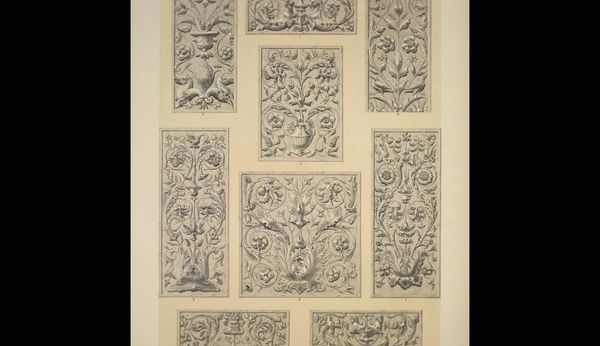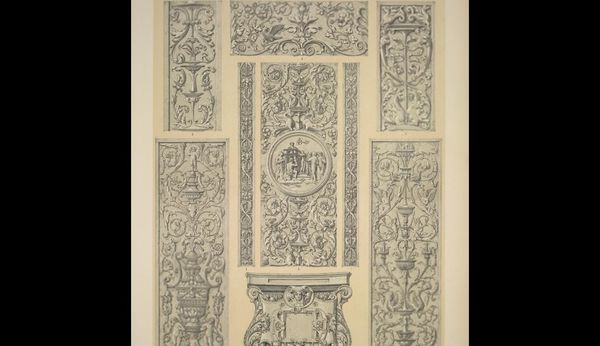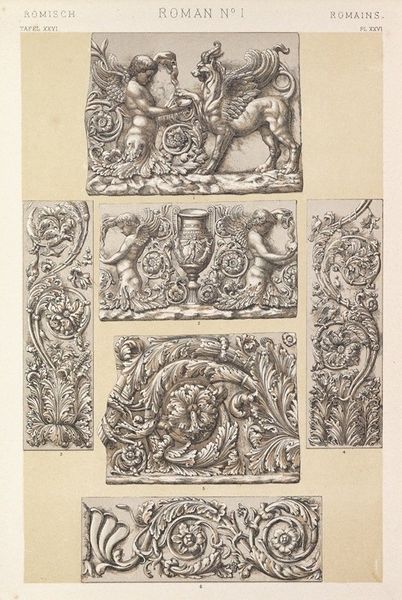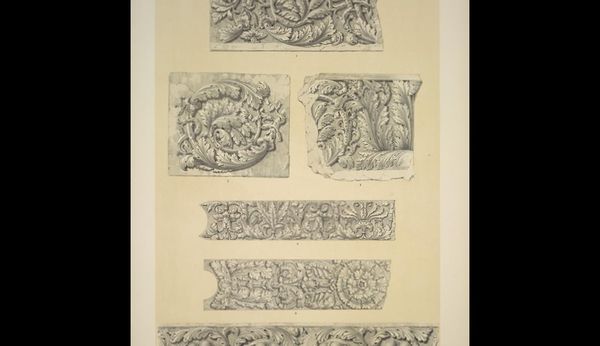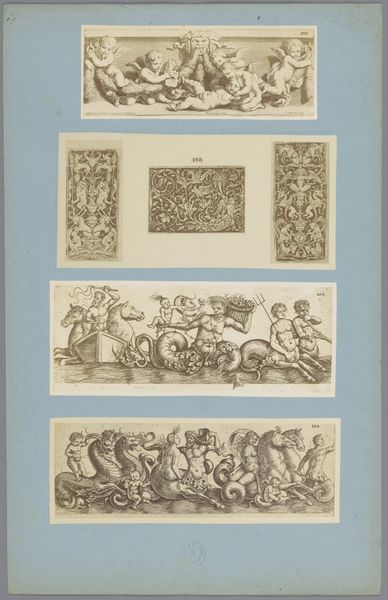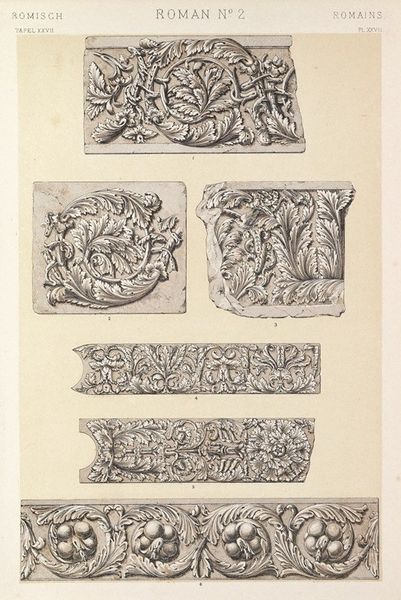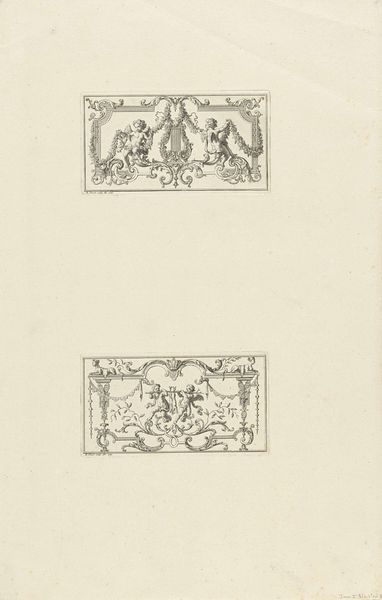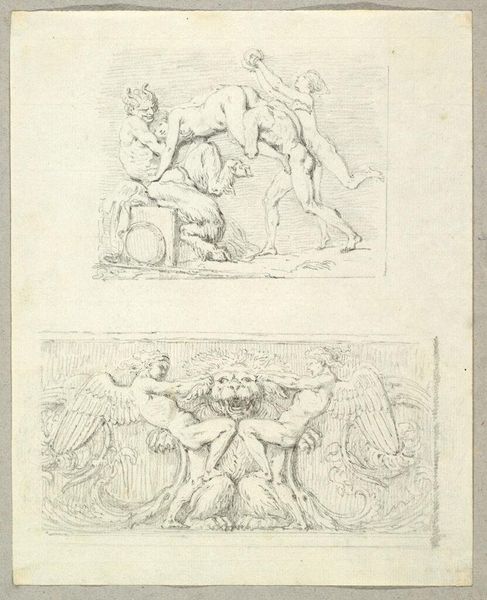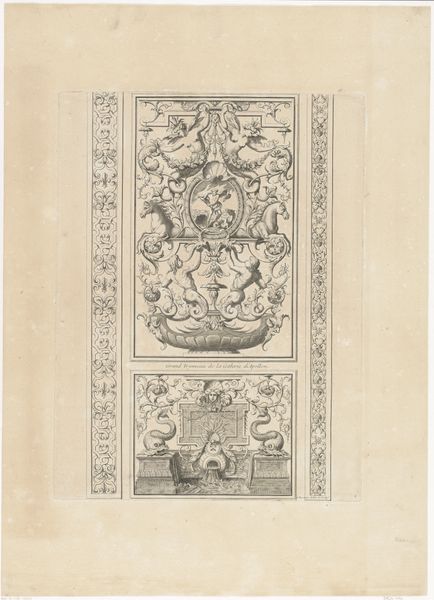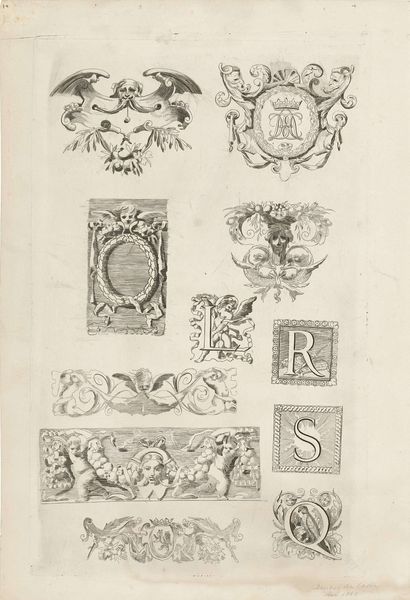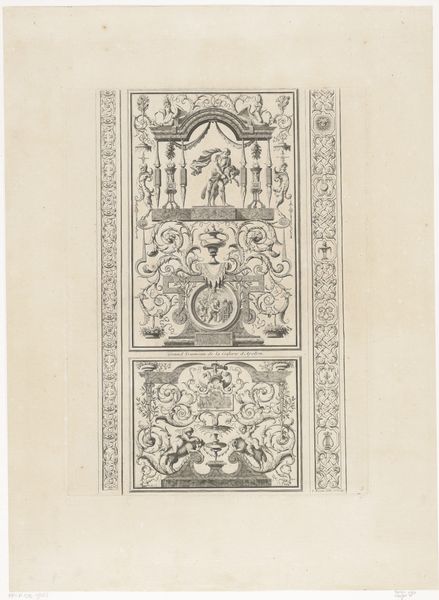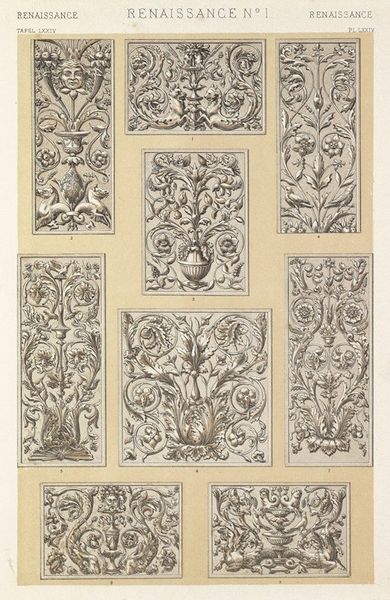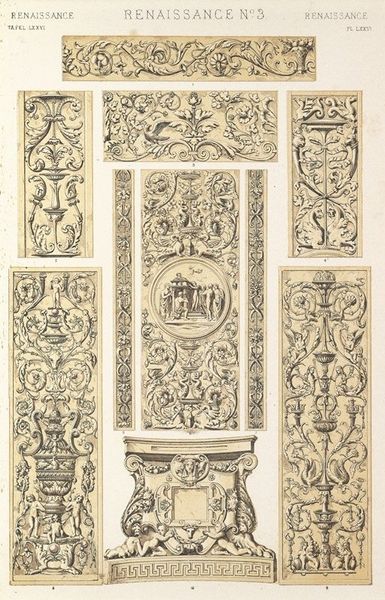
drawing, ornament, carving, print, sculpture, engraving, architecture
#
drawing
#
ornament
#
carving
# print
#
sculpture
#
classical-realism
#
sculpture
#
engraving
#
architecture
Copyright: Public domain
Curator: This is "Roman no. 1. Roman ornaments from casts in the Crystal Palace" by Owen Jones, a detailed print showcasing various Roman ornamental designs. What’s your immediate reaction to this piece? Editor: Overwhelmingly intricate. My eye jumps from cherubic figures to twisting foliage. There's a density to the shading, which lends a remarkable depth and realism to each carved relief. Curator: Jones was instrumental in shaping Victorian design principles. He saw these ornaments as vital building blocks. He helped to educate both designers and the public about historical styles in the burgeoning culture of museums and world exhibitions like the Crystal Palace. Editor: I see. So these drawings function almost like a design manual. From a formal perspective, the way he uses hatching and cross-hatching to create volume is quite sophisticated for what is essentially a reference document. Notice how it captures the play of light across the curved surfaces, it almost tricks the eye to seem three dimensional. Curator: Absolutely, and this was for mass consumption. The Crystal Palace sought to democratize access to culture and design, bringing refined aesthetics to the masses. The print speaks to the Victorian era's fascination with classical antiquity and its appropriation for contemporary design. Editor: I'm struck by how these patterns seem both incredibly formal and, paradoxically, quite playful, too. You've got these severe classical forms, and then a cherub pops in! The constant contrast gives the piece a dynamic rhythm. Curator: It underscores the social and cultural aspirations of the time. Classicism provided a visual language of sophistication that resonated deeply. Jones tried to establish something of design education and appreciation among a rapidly expanding industrialized society. Editor: Considering its role as an educational tool, Jones did well in crafting the visuals, using contrasting light and darkness to allow the different details and carvings to be studied separately, but yet in combination together in the overall layout of his composition. Curator: In essence, "Roman no. 1" offers a glimpse into a specific moment where art, industry, and social reform intersected. Jones’s work highlights the Victorian desire to elevate public taste through historical examples. Editor: I'll definitely leave with an enhanced sense of how the design informs the era, but also how individual motifs were crafted to engage with audiences beyond historical study.
Comments
No comments
Be the first to comment and join the conversation on the ultimate creative platform.
